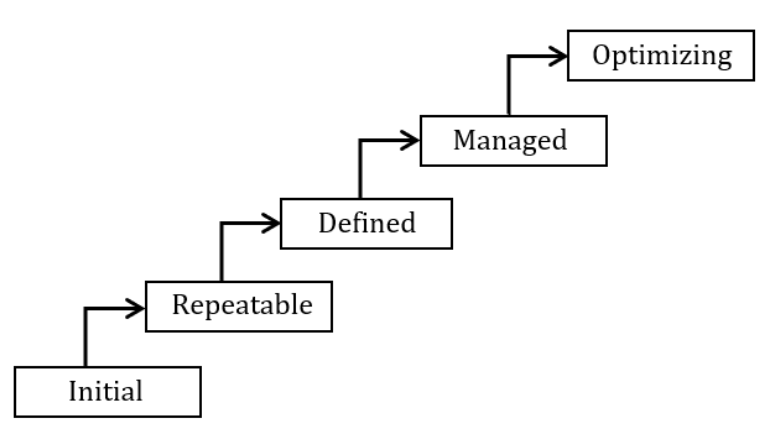CMMI
Question 1 |
Match List I with List II
With reference to CMM developed by Software Engineering Institute (SEI)
List I List II
A) INITIAL (I) Process measurement
B) REPEATABLE (II) Process definition
C) DEFINED (III) Project management
D) MANAGED (IV) AD HOC
Choose the correct answer from the options given below:
A-III, B-IV, C-II, D-I | |
A-IV, B-III, C-I, D-II | |
A-IV, B-III, C-II, D-I | |
A-III, B-IV, C-I, D-II |
Question 1 Explanation:
Level 1: Initial. The software process is characterized as ad hoc and occasionally even chaotic. Few processes are defined, and success depends on individual effort.
Level 2: Repeatable. Basic project management processes are established to track cost, schedule, and functionality. The necessary process discipline is in place to repeat earlier successes on projects with similar applications.
Level 3: Defined. The software process for both management and engineering activities is documented, standardized, and integrated into an organization wide software process. All projects use a documented and approved version of the organization's process for developing and supporting software. This level includes all characteristics defined for level 2.
Level 4: Managed. Detailed measures of the software process and product quality are collected. Both the software process and products are quantitatively understood and controlled using detailed measures. This level includes all characteristics defined for level 3.
Level 5: Optimizing. Continuous process improvement is enabled by quantitative feedback from the process and from testing innovative ideas and technologies. This level includes all characteristics defined for level 4.

Level 2: Repeatable. Basic project management processes are established to track cost, schedule, and functionality. The necessary process discipline is in place to repeat earlier successes on projects with similar applications.
Level 3: Defined. The software process for both management and engineering activities is documented, standardized, and integrated into an organization wide software process. All projects use a documented and approved version of the organization's process for developing and supporting software. This level includes all characteristics defined for level 2.
Level 4: Managed. Detailed measures of the software process and product quality are collected. Both the software process and products are quantitatively understood and controlled using detailed measures. This level includes all characteristics defined for level 3.
Level 5: Optimizing. Continuous process improvement is enabled by quantitative feedback from the process and from testing innovative ideas and technologies. This level includes all characteristics defined for level 4.

Question 2 |
Which of the following sets represent five stages defined by Capability Maturity Model (CMM) in increasing order of maturity ?
Initial, Defined, Repeatable, Managed, Optimized. | |
Initial, Repeatable, Defined, Managed, Optimized. | |
Initial, Defined, Managed, Repeatable, Optimized. | |
Initial, Repeatable, Managed, Defined, Optimized. |
Question 2 Explanation:
CMM stands for Capability Maturity Model is a process model which specifies the process improvement approach in software development.
CMM levels:
1. Initial
2. Repeatable
3. Defined
4. Managed
5.Optimizing
CMM levels:
1. Initial
2. Repeatable
3. Defined
4. Managed
5.Optimizing
There are 2 questions to complete.
